 Things have really changed in medicine since the early 20th century and you should be thankful for that. Some of the remedies doctors prescribed typically did more harm than good (a lot more harm in many cases). Let’s reflect on just how far we’ve come in the name of science, with a look at 10 of the most harrowing treatments people suffered through in the 20th century.
Things have really changed in medicine since the early 20th century and you should be thankful for that. Some of the remedies doctors prescribed typically did more harm than good (a lot more harm in many cases). Let’s reflect on just how far we’ve come in the name of science, with a look at 10 of the most harrowing treatments people suffered through in the 20th century.
-
Iron Lung
 Reminiscent of something birthed in Dr. Frankenstein’s laboratory, the iron lung was a wall forged of a haunting mix of iron and people, seemingly frozen in time with only their heads and faces visible. What was it meant to treat? It was used to combat Polio outbreaks in the 20th century.
Reminiscent of something birthed in Dr. Frankenstein’s laboratory, the iron lung was a wall forged of a haunting mix of iron and people, seemingly frozen in time with only their heads and faces visible. What was it meant to treat? It was used to combat Polio outbreaks in the 20th century.
Polio often led to paralysis and ultimately suffocation because the muscles controlling breathing stopped working. The iron lung recreated the breathing cycle for patients, but it often kept them entombed for weeks, months or sometimes years at a time. Patients would be totally immobilized, as they could only lay motionless while the iron lung took hold.
Believe it or not, the iron lung is still used today in rare cases. Though the threat of polio is minimal in the United States, emergency cases of paralytic polio outbreaks in other countries still exists.
-
Pedicle graft
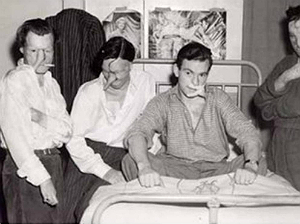 Pedicle grafts weren’t exactly dangerous, but you couldn’t tell that from looking at photos of the procedures. It was developed by Dr. Harold Gillies to help treat World War I soldiers disfigured by combat.
Pedicle grafts weren’t exactly dangerous, but you couldn’t tell that from looking at photos of the procedures. It was developed by Dr. Harold Gillies to help treat World War I soldiers disfigured by combat.
A flap of skin taken from an unaffected area was sewn into a tube and then attached to wherever the new body part needed to go. The attached tube maintained a steady blood supply to the area, lowering the chance of infection or rejection from the body.
-
Children soothing syrups
 A series of soothing syrups, lozenges and powders were created to help struggling mothers deal with unruly children. While wildly effective, most of these medications were completely laced with dangerous amounts of narcotics modern day addicts would likely think twice about using.
A series of soothing syrups, lozenges and powders were created to help struggling mothers deal with unruly children. While wildly effective, most of these medications were completely laced with dangerous amounts of narcotics modern day addicts would likely think twice about using.
For instance, one ounce of Mrs. Winslow’s Soothing Syrup was said to contain 65 mg of pure morphine! Some of the ingredients found in these “miracle” potions included morphine sulfate, chloroform, codeine, heroin and powdered opium. Unsurprisingly, many children died after continued use of these harmful concoctions.
-
Bloodletting
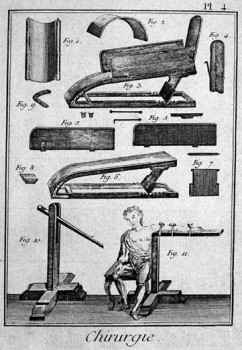 Bloodletting was originated by the Greeks and continued through the late 19th century. It was used as treatment for just about any ailment a person might have. The bloodletting theory is based on principles of balance and harmony of fluids in the body.
Bloodletting was originated by the Greeks and continued through the late 19th century. It was used as treatment for just about any ailment a person might have. The bloodletting theory is based on principles of balance and harmony of fluids in the body.
In theory, the body was filled with four fluids: blood, phlegm, yellow bile and black bile (the fluids were called humours). Any imbalance in the four was where illnesses supposedly came from. Doctors would drain patients of blood, to make room for the other fluids to balance everything out again. Delirium from blood loss occurred frequently, and overall, it didn’t have any positive applications.
-
Plombage
 This was a treatment for tuberculosis where a surgeon created a cavity in the lower lungs and then filled it with something like Lucite (acrylic) balls.
This was a treatment for tuberculosis where a surgeon created a cavity in the lower lungs and then filled it with something like Lucite (acrylic) balls.
Doing this caused the upper lung (the infected part) to collapse and in theory begin the healing process. This process was incredibly dangerous and many times the balls weren’t removed, leading to infection.
-
DDT Lousing
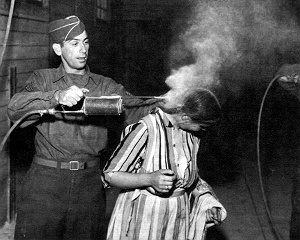 This was problematic for obvious reasons. Spraying toxic DDT clouds into someone’s hair isn’t the safest way to get rid of lice. Body lice was a serious problem during World War II, often carrying and spreading disease, such as typhus. During World War I, typhus killed more than 3 million people.
This was problematic for obvious reasons. Spraying toxic DDT clouds into someone’s hair isn’t the safest way to get rid of lice. Body lice was a serious problem during World War II, often carrying and spreading disease, such as typhus. During World War I, typhus killed more than 3 million people.
The DDT spray killed all the body lice, but also inflicted serious damage on the person. It was later determined that the DDT pesticide was far more dangerous and deadly than lice.
Unfortunately, many people found this out the hard way. Luckily, the use of DDT was banned by the Environmental Protection Agency (EPA) in 1972.
-
Rib Resection
 Pus buildup was a common side effect of pneumonia in the early 20th century. Eventually, victims could drown from it, so to combat this, doctors conducted rib re-sectioning surgery to drain the fluid.
Pus buildup was a common side effect of pneumonia in the early 20th century. Eventually, victims could drown from it, so to combat this, doctors conducted rib re-sectioning surgery to drain the fluid.
The ribs were removed so the lungs could be reached easier for incision and draining procedures. The procedure was dangerous, unreliable and many people died from it long before any draining could occur.
-
Lobotomies/Trepanation
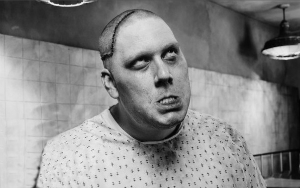 The procedure involved placing an ice pick (or similar object) behind the eye socket and then using a mallet to push it into the brain’s prefrontal lobe. Once inserted, surgeons would move the pick back and forth to shred the tissues there. It was widely accepted as a cure for an assortment of medical diagnoses. The problem is, it didn’t really cure anything and just left people in a vegetative state.
The procedure involved placing an ice pick (or similar object) behind the eye socket and then using a mallet to push it into the brain’s prefrontal lobe. Once inserted, surgeons would move the pick back and forth to shred the tissues there. It was widely accepted as a cure for an assortment of medical diagnoses. The problem is, it didn’t really cure anything and just left people in a vegetative state.
-
Mercury as a cure for syphilis
 Syphilis can eventually lead to blindness, dementia and ultimately death. So it’s easy to see why extreme measures were taken to cure it. However, mercury wasn’t the best alternative medicine either. Using it as a treatment proved to be just as dangerous as the disease itself.
Syphilis can eventually lead to blindness, dementia and ultimately death. So it’s easy to see why extreme measures were taken to cure it. However, mercury wasn’t the best alternative medicine either. Using it as a treatment proved to be just as dangerous as the disease itself.
The problem is, mercury seemed to work for the early symptoms of syphilis, because it effectively removed lesions and soreness. What doctors didn’t know was that syphilis could go into remission and come back in a much more dangerous tertiary stage. Mercury couldn’t do anything to help that. In addition, mercury caused devastating side effects like tooth loss, nervous system damage and even death.
-
Radium treatments
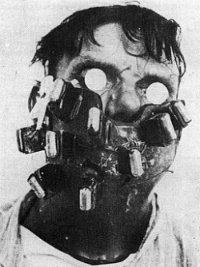 This form of treatment was discovered by Marie and Pierre Curie in 1898. Soon after, radioactive materials were promoted as cures for everything from constipation to diabetes. People bathed in it to treat rheumatism, and they inhaled radioactive steam to sooth the lungs. In 1932, the Wall Street Journal ran a story called “The Radium Water Worked Fine until His Jaw Came Off” and it effectively ended the radium craze.
This form of treatment was discovered by Marie and Pierre Curie in 1898. Soon after, radioactive materials were promoted as cures for everything from constipation to diabetes. People bathed in it to treat rheumatism, and they inhaled radioactive steam to sooth the lungs. In 1932, the Wall Street Journal ran a story called “The Radium Water Worked Fine until His Jaw Came Off” and it effectively ended the radium craze.
So the good news is, things have changed. Many outlandish (at least by today’s standards) medical remedies have been banished back to the nightmare realm they spawned from. While I’m sure 100 years from now they’ll say the same about us, the early 20th century was downright dangerous, and just because someone saw a doctor, didn’t mean they necessarily got better. In fact, often times they left with more ailments than what they started with.








